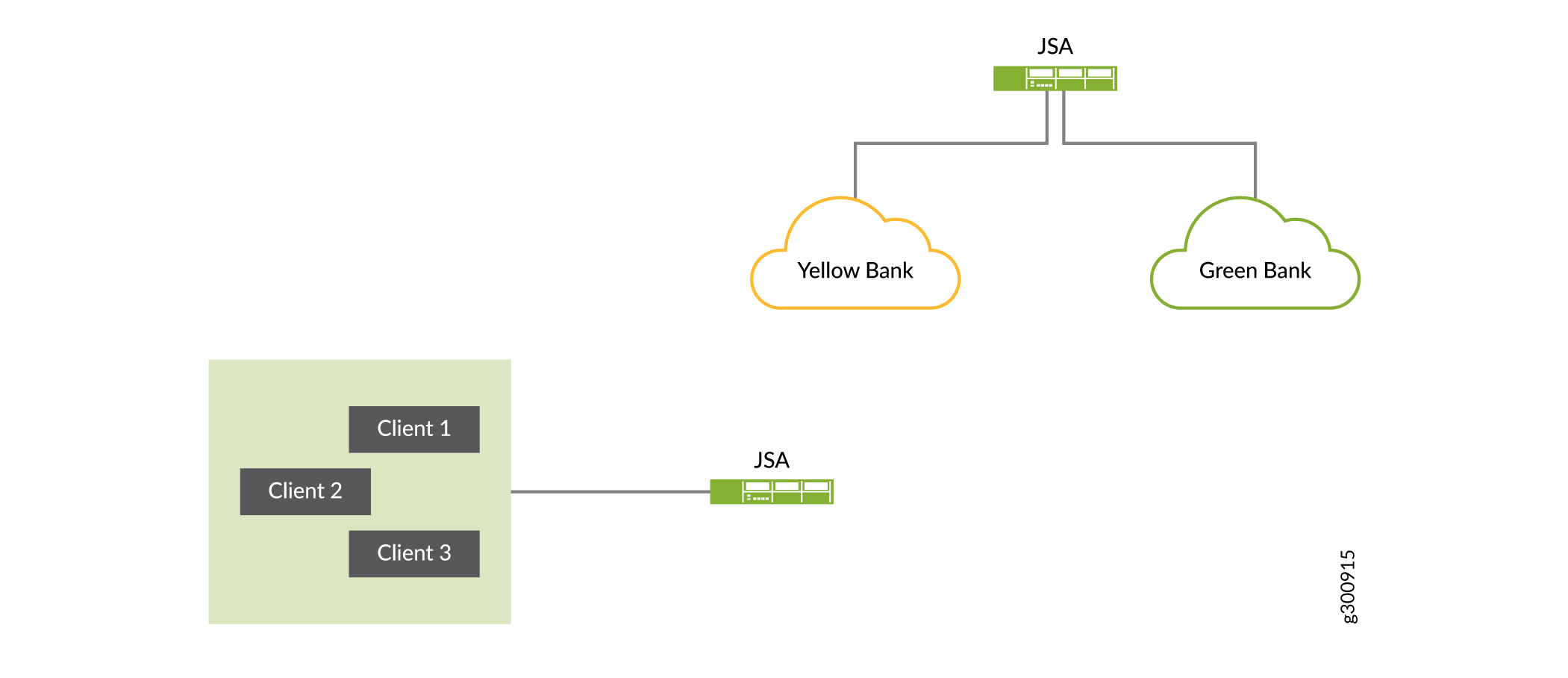- play_arrow What's New for Administrators
- play_arrow Overview of JSA Administration
- play_arrow User Management
- play_arrow License Management
- play_arrow System Management
- System Management
- System Health Information
- JSA Component Types
- Data Nodes
- Network Interface Management
- JSA System Time
- NAT-Enabled Networks
- Off-site Hosts Management
- Managed Hosts
- Configuration Changes in your JSA Environment
- Deploying Changes
- Restarting the Event Collection Service
- Shutting Down a System
- Restarting a System
- Collecting Log Files
- Changing the Root Password on Your JSA Console
- Resetting SIM
- play_arrow JSA Set Up Tasks
- JSA Set Up Tasks
- Network Hierarchy
- Automatic Updates
- Manual Updates
- Configuring System settings
- IF-MAP Server Certificates
- SSL Certificates
- IPv6 Addressing in JSA Deployments
- Advanced Iptables Rules Examples
- Data Retention
- System Notifications
- Custom Offense Close Reasons
- Configuring a Custom Asset Property
- Index Management
- Restrictions to Prevent Resource-intensive Searches
- App Hosts
- Checking the Integrity Of Event and Flow Logs
- Adding Custom Actions
- Managing Aggregated Data Views
- Accessing a GLOBALVIEW Database
- play_arrow Event Data Processing in JSA
- Event Data Processing in JSA
- DSM Editor Overview
- Properties in the DSM Editor
- Property Configuration in the DSM Editor
- Opening the DSM Editor
- Configuring a Log Source Type
- Configuring Property Autodetection for Log Source Types
- Configuring Log Source Autodetection for Log Source Types
- Configuring DSM Parameters for Log Source Types
- Custom Log Source Types
- Custom Property Definitions in the DSM Editor
- Event Mapping
- Exporting Contents from the DSM Editor
- play_arrow Using Reference Data in JSA
- play_arrow User Information Source Configuration
- play_arrow Juniper Networks X-Force Integration
- play_arrow Managing Authorized Services
- play_arrow Backup and Recovery
- play_arrow Flow Sources Management
- play_arrow Remote Networks and Services Configuration
- play_arrow Server Discovery
- play_arrow Domain Segmentation
- play_arrow Asset Management
- play_arrow Configuring JSA to Forward Data to Other Systems
- Forward Data to Other Systems
- Adding Forwarding Destinations
- Configuring Forwarding Profiles
- Configuring Routing Rules to Forward Data
- Using Custom Rules and Rule Responses to Forward Data
- Configuring Routing Rules to Use the JSA Data Store
- Viewing Forwarding Destinations
- Viewing and Managing Forwarding Destinations
- Viewing and Managing Routing Rules
- play_arrow Event Store and Forward
- play_arrow Security Content
- play_arrow SNMP Trap Configuration
- play_arrow Protect Sensitive Data
- play_arrow Log Files
- play_arrow Event Categories
- play_arrow Common Ports and Servers Used by JSA
- play_arrow RESTful API
Multitenant Management
Multitenant environments allow Managed Security Service Providers (MSSPs) and multi-divisional organizations to provide security services to multiple client organizations from a single, shared JSA deployment. You don't have to deploy a unique JSA instance for each customer.

In a multitenant deployment, you ensure that customers see only their data by creating domains that are based on their JSA input sources. Then, use security profiles and user roles to manage privileges for large groups of users within the domain. Security profiles and user roles ensure that users have access to only the information that they are authorized to see.





















